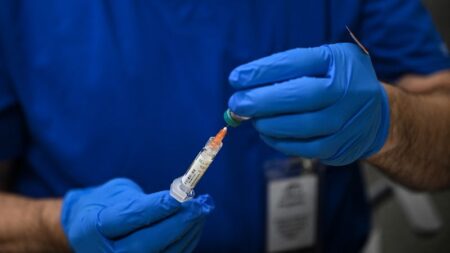The evolving landscape of medical guidelines regarding blood pressure management is one of the most significant health discussions today. The American Heart Association (AHA) and the American College of Cardiology (ACC) have released new guidelines that are poised to rethink how high blood pressure is identified and treated. These guidelines, which represent the first major update since 2017, suggest a more proactive stance on managing high blood pressure. If you thought your last visit to the doctor was all about discussing lifestyle, you might be in for a surprise: medical practitioners will now be more assertive in addressing elevated blood pressure levels.
According to these updated recommendations, many adults are living with high blood pressure, with nearly half of the U.S. adult population classified as having levels above the norm. The threshold for normal blood pressure remains less than 120/80 mm Hg, while 120-129/80 mm Hg is marked as elevated. Any reading at or above 130/80 mm Hg triggers a medical response, indicating that individuals will need to make necessary adjustments to their lifestyle or health regimen. This proactive approach aims to combat heart disease, which holds the notorious title of the leading cause of death globally.
Measuring blood pressure involves reading two numbers represented in millimeters of mercury (mm Hg): systolic pressure (the upper number) indicates the force of blood when the heart pumps, while diastolic pressure (the lower number) measures blood pressure during the heart’s resting phase. Typically, high blood pressure, or hypertension, doesn’t present with clear symptoms, making routine check-ups critical. The unregulated pressure can accelerate wear and tear on the heart and vessels, raising the likelihood of severe cardiovascular events, including strokes or heart attacks.
One notable shift in the new guidelines is the emphasis on adopting healthier lifestyles before jumping straight to medication. For those whose systolic blood pressure falls between 130 and 139 mm Hg, the AHA suggests initiating lifestyle adjustments as a first line of defense. Only after a period of three to six months, without satisfactory results from lifestyle changes alone, should medical interventions be considered—a departure from the previous recommendation published in 2017.
Dr. Daniel Jones, chair of the writing committee for the guidelines, underscored the importance of these measures. The new approach aims to enhance overall health by preventing conditions such as cardiovascular diseases, kidney complications, and even dementia. These are profound implications, revealing how intertwined blood pressure management is with broader health concerns.
The guidelines also introduce more stringent recommendations regarding the consumption of alcohol. While prior guidelines permitted limited drinking—one alcoholic beverage daily for women and two for men—the new stance advises abstention from alcohol altogether. Dr. Jones expresses the wealth of evidence linking excessive alcohol intake to high blood pressure, indicating that individuals should be informed of these risks when making lifestyle choices.
Additionally, the guidelines highlight the significance of women’s health, particularly those who are pregnant or planning to conceive. High blood pressure poses serious risks during pregnancy and can lead to lasting complications beyond childbirth. Regular monitoring and active management are essential for this demographic.
Dietary guidelines remain pivotal in managing blood pressure. The DASH (Dietary Approaches to Stop Hypertension) diet encourages high intake of fruits, vegetables, whole grains, and lean proteins while minimizing fat, sugar, and certain oils. Particular attention is drawn to restricting sodium intake to less than 2,300 mg daily, advocating for an ideal limit of about 1,500 mg.
Moreover, addressing weight is crucial: losing just 5% of body weight can deliver significant improvements in blood pressure management. The recommendations extend to systematic interventions, including diet changes, physical activity, weight-loss medications, and even surgical options for severe obesity cases.
Despite the challenges posed by dietary adjustments in a food environment flooded with high-sodium and high-calorie options, Dr. Jones offers hope. He stresses that individuals can significantly improve their health outcomes by making informed choices. The path to effective blood pressure management may be demanding, but as research shows, sustained effort indeed pays off in health dividends. With these guidelines, the journey to better cardiovascular health is marked by a combination of ambition, lifestyle modification, and collaborative efforts between patients and healthcare professionals.












